Antioch’s Dozier-Libbey Medical High Class of 2022 celebrate graduation Thursday night
Friday, June 10th, 2022
Dozier-Libbey graduates cheer and toss their caps into the to celebrate at the conclusion of the ceremony Thursday evening, June 9, 2022.. Photos by Allen D. Payton
Honor fallen classmate with standing ovation; Principal Osterholt says farewell to the graduates and the school as he heads for retirement

Dozier-Libbey grads wearing their caps inscribed with special messages listen to school board trustee Dr. Clyde Lewis.
By Allen D. Payton
The 90-degree heat didn’t keep the Dozier-Libbey Medical High School Class of 2022 from celebrating their graduation, Thursday night. Family and friends cheered their graduates, during the ceremony held inside the Deer Valley Wolverines Stadium. The students honored a fallen classmate, Mason Rodriguez, with standing ovation as his parents received his diploma and hugs from Trustee Dr. Clyde Lewis and Principal Scott Osterholt.
After the soon-to-be alumni filed in, to the traditional playing of Pomp and Circumstance, performed by the Dozier-Libbey Medical High School Band under the direction of Larry Widener, Patricia Jeanne Mari Ramos Abenoja sang the National Anthem. That was followed by the Pledge of Allegiance to our nation’s flag, led by Salutatorian Cynthia Rodriguez.
Lewis, the only member of the Antioch School Board in attendance, as Board President Gary Hack and Trustee Mary Rocha were attending the Bidwell High School graduation at the same time across town, offered some opening remarks reminding the class of the past, while focusing on their future with encouragement.
 “These past few years have been especially challenging. COVID, distance learning, working together in our homes,” he stated. “All of these things presented new and challenging ways that you all had to experience education. And guess what, you stared steadfast into the face of that challenge, and you overcame it. For this, you should be proud. For the last three years, or 26,280 hours you have had to adapt, redirect, change course and adjust, and guess what, you did it.”
“These past few years have been especially challenging. COVID, distance learning, working together in our homes,” he stated. “All of these things presented new and challenging ways that you all had to experience education. And guess what, you stared steadfast into the face of that challenge, and you overcame it. For this, you should be proud. For the last three years, or 26,280 hours you have had to adapt, redirect, change course and adjust, and guess what, you did it.”
“You are the face of the future, and I am here for it. Thank you for inspiring all those around you. Thank you for leading the charge and showing the world that you will stick to your goals and overcome them no matter the obstacle,” Lewis continued. “It is said that the journey of a thousand miles begins with one step. Well, tonight represents the first step toward your future. Whether the next phase be college, job, or a gap year, just remember that you have and will continue to push forward through any challenge you may face.”

Valedictorian James Geronimo offers his classmates encouragement during his commencement speech, Thursday evening.
 During his speech, Valedictorian James Geronimo referred to his fellow classmates as, “the future change makers of our nation and world. The same peers I now call family.”
During his speech, Valedictorian James Geronimo referred to his fellow classmates as, “the future change makers of our nation and world. The same peers I now call family.”
“We have made it,” he said. “We have earned this moment and we should all be incredibly proud of ourselves that we have made gotten this far.”
“Live with your head held high. Set your heart ablaze. Grit your teeth and look straight ahead,” Geronimo said, quoting Mason Rodriguez. “Living out the mission statements we each created with sincerity and doing so with our hearts set ablaze, filled from head-to-toe with determination, courage and enthusiasm.”
“Remember….the pandemic you endured. What was supposed to be a nearly two-week break, turned into two months, then turned into almost two years,” he reflected.

Dozier-Libbey grads give a standing ovation for fallen classmate Mason Rodriguez whose photo was placed on a front row chair, as his parents, Michael and Jerilyn receive his diploma from Trustee Clyde Lewis.

As he prepares to retire, Principal Scott Osterholt speaks to his final graduating class.
“I want us to never forget the connections you created, the memories you formed and the accomplishments you earned. We have proven time and time again, that we’re equipped with the skills and the passion to make change in this world.” Geronimo continued. “You’ll determine how far you will go. So, spread your wings and fly as high and far as you can go.”
“The future is bright, everybody. Now, it is up to you to make it a great future or not. Congratulations…to the graduating Class of 2022,” he concluded.
Osterholt spoke at his final graduation of students at DLMHS as he’s retiring this year. He presented the Class of 2022 to Superintendent Stephanie Anello who in turn accepted the class “on behalf of the Antioch Unified School District Board of Education.
“Henceforth you are to be known as high school graduates and alumni of Dozier-Libbey Medical High School,” she said.

Amarachi Ibe speaks to her classmates.
Following the reading of the names by teacher Mark Libbey, son of one of the school’s namesakes, and the presentation of the diplomas by Lewis, student Commencement Speaker Amarachi Ibe shared her thoughts.
“Senior family you have accomplished one of the many milestones you will accomplish in your life,” she said.
“As we look back on the last four years, we can single out one group of people who caused our suffering, the teachers,” Amarachi said joking.
Speaking of her fellow classmates she said, “It makes us feel like we have a second family. I always felt welcomed and safe at this school. I would like to congratulate you for earning your diplomas which signifies growth, perseverance and diligence.”

Class President Syrenity Yates speaks before leading the turning of the tassels.
“Mr. Libbey said you don’t grow inside of your comfort zone. Wise words that will stay in my mind forever,” Amarachi continued.
“We earned this moment, and I am so proud of us. Once a Diamondback always a Diamondback,” she said to a cheer from the graduates.
At the beginning of the Tassel Ceremony, Class President Syrenity Yates shared some thoughts with her classmates.
She then led the graduates in moving the tassels on their very colorful and decorated caps, with fun and inspiring sayings in English and Spanish, to signify they’ve graduated. Some of her classmates tossed their caps into the air and they all filed out to meet family and friends to celebrate with hugs, photos, flowers and dancing.
Congratulations, Dozier-Libbey Class of 2022. May God bless you in your future pursuits!
See the graduation video on the AUSD YouTube page.
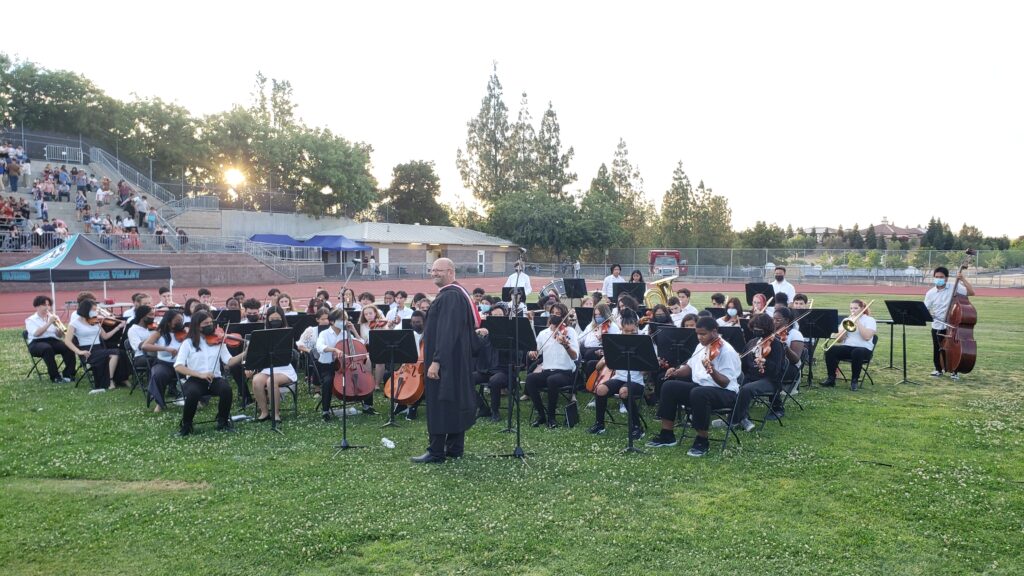
The Dozier-Libbey Medical High School Band under the direction of Larry Widener performs the recessional at the end of the graduation ceremony.
More Photos of the Dozier-Libbey Medical High School Class of 2022 Graduation
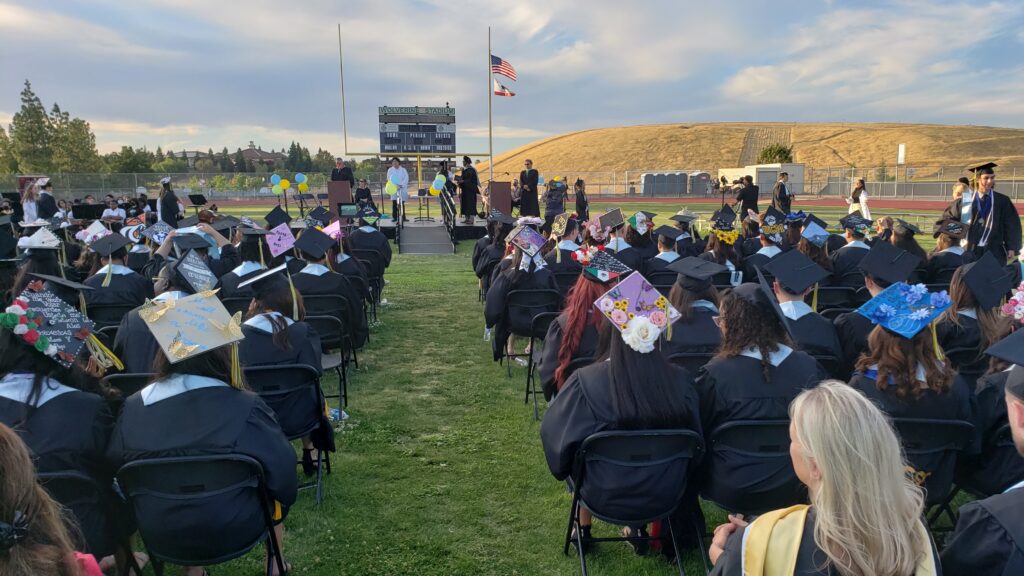
Dozier-Libbey graduates watch as their classmates receive their diplomas.

Graduate Logan Amezcua is greeted by Dr. Lewis as he walks on stage to receive his diploma.
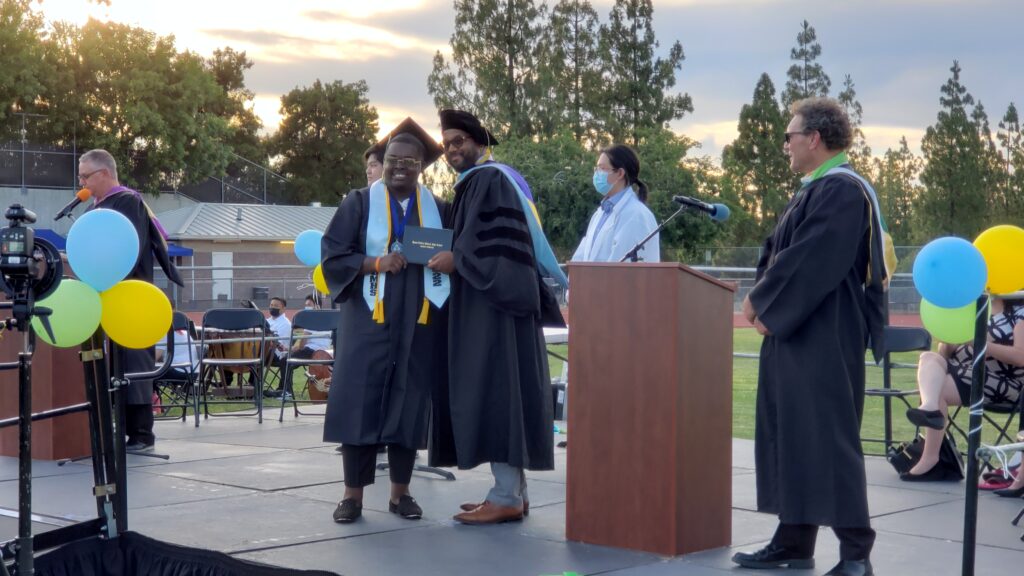

Graduates line up to receive their diplomas as the Honor Guard members line the way.
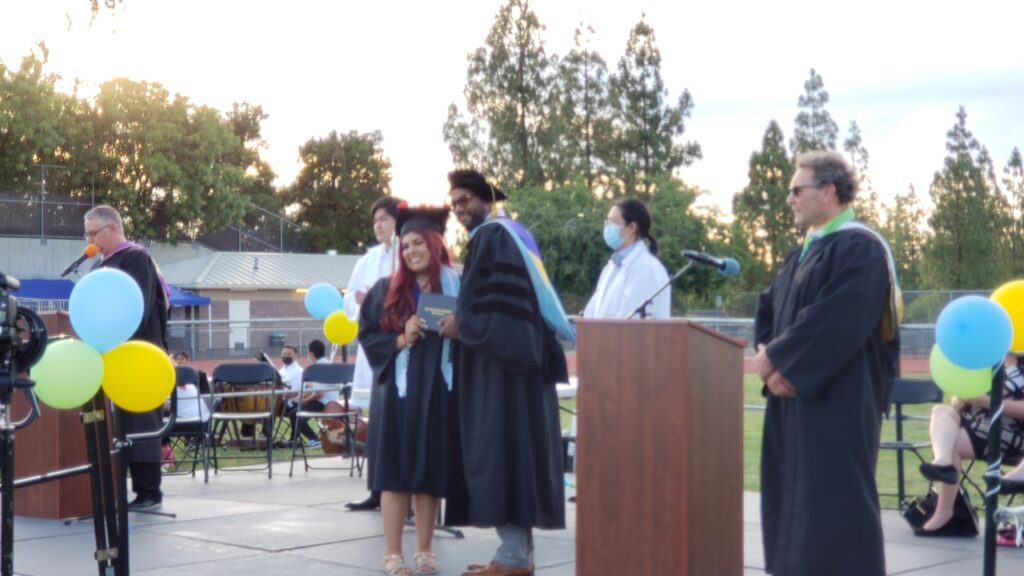

More grads display their creative caps with special messages during the ceremony.

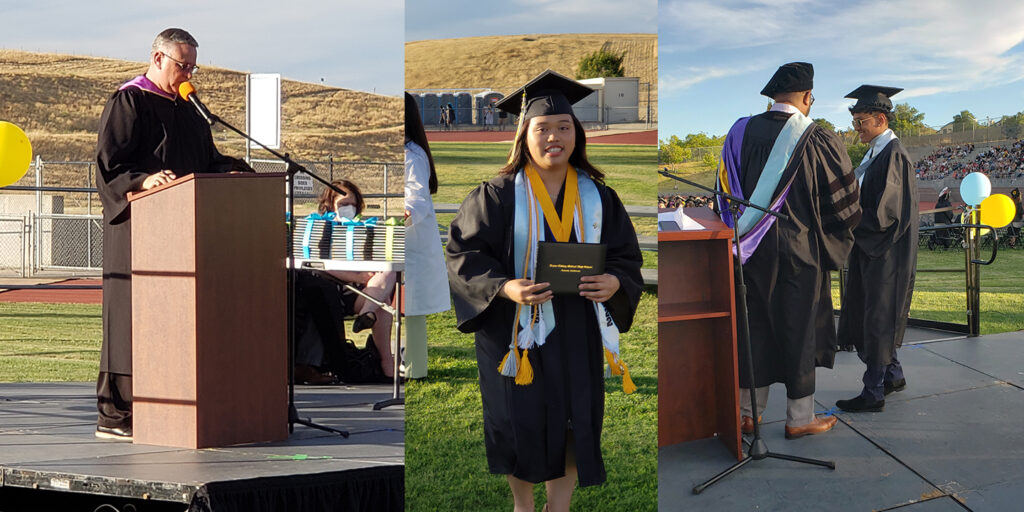
Teacher Mark Libbey reads the name of each graduate.











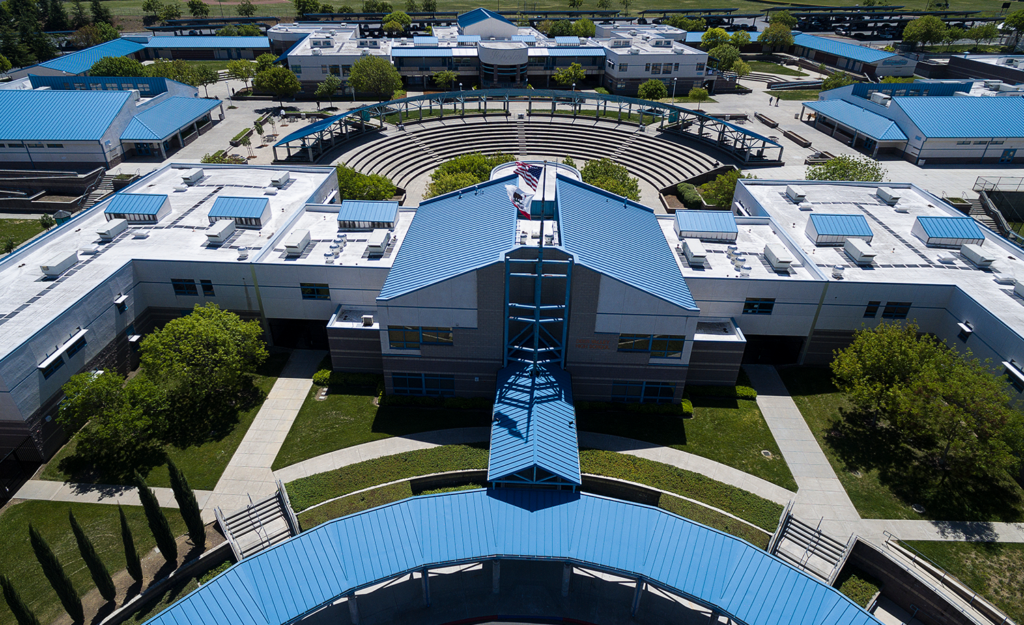

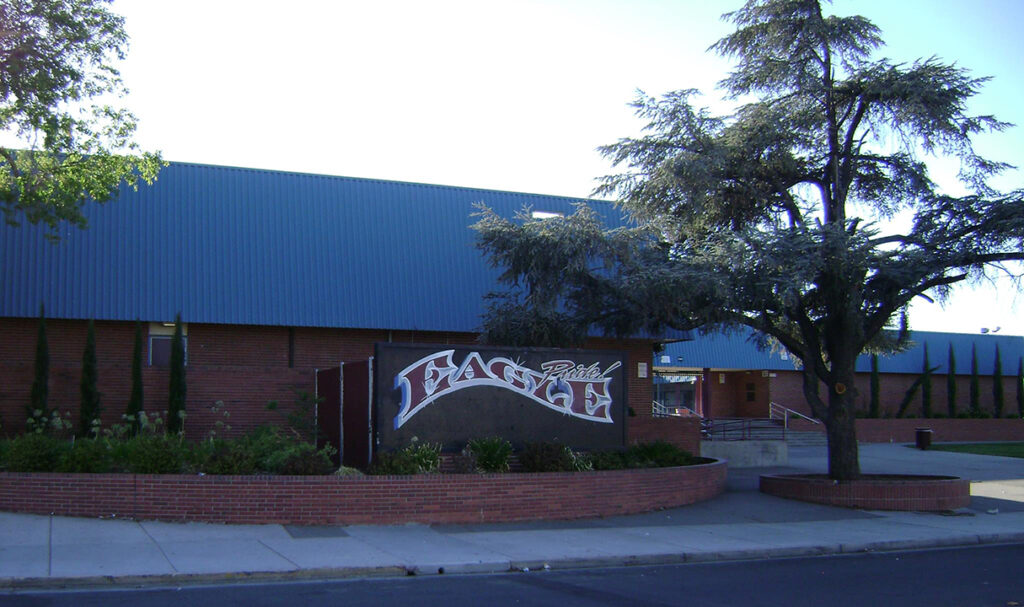
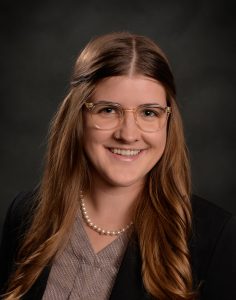
 By Allen D. Payton
By Allen D. Payton















